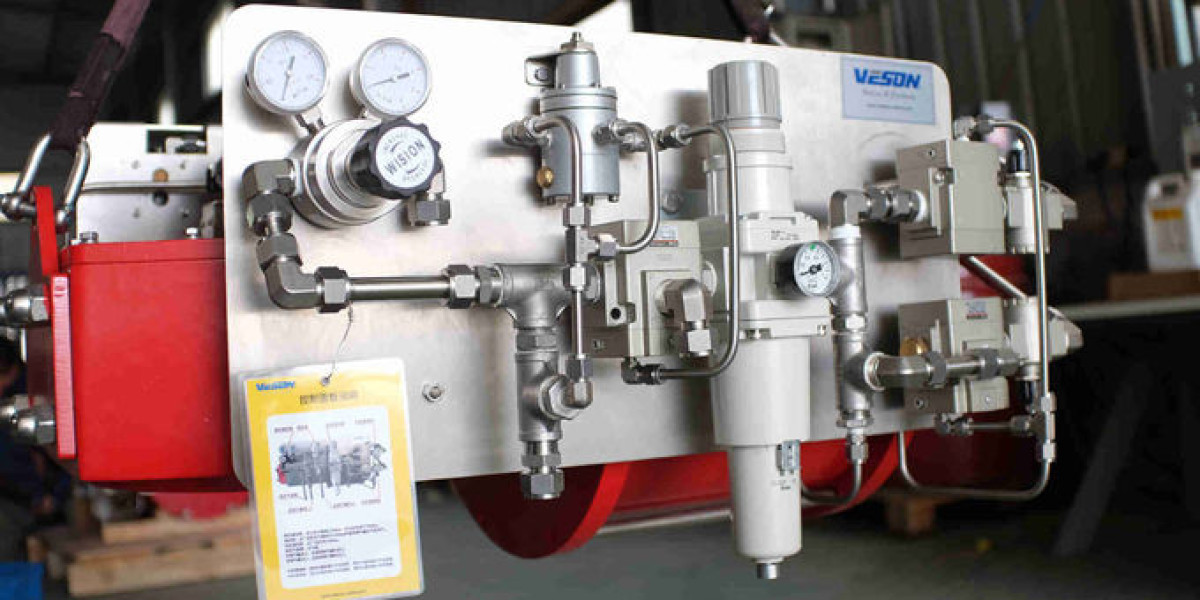Control valve systems are pivotal in managing the flow of fluids in various industrial applications. They regulate the pressure and flow rate, ensuring the efficient and safe operation of processes in sectors such as oil and gas, chemical manufacturing, power generation, and water treatment. Given their critical role, maintaining and repairing these systems is vital to prevent operational downtime and ensure system reliability. This article delves into the intricacies of control valve system repair, exploring techniques, challenges, and best practices to keep these essential components in optimal condition.
Understanding Control Valve Systems
A control valve system consists of several components that work together to regulate fluid flow. These include the valve body, actuator, positioner, and various accessories such as sensors and controllers. The valve body houses the internal parts that directly control the flow, while the actuator moves the valve stem based on signals from the control system. The positioner ensures that the valve achieves the desired position, and the sensors provide feedback to the control system for accurate adjustments.
Common Issues in Control Valve Systems
Several issues can affect the performance of control valve systems, necessitating control valve system repair. Some common problems include:
Valve Leakage: Leakage can occur due to worn-out seals, gaskets, or valve seats. It can lead to loss of fluid, reduced efficiency, and potential safety hazards.
Stiction and Hysteresis: Stiction refers to the static friction that prevents the valve from moving smoothly, while hysteresis is the lag in response between the input signal and the valve's movement. Both can cause inaccuracies in flow control.
Corrosion and Erosion: Exposure to corrosive fluids or abrasive particles can damage the valve components, leading to reduced lifespan and performance issues.
Actuator Malfunction: Actuators can fail due to electrical, mechanical, or pneumatic problems, resulting in improper valve operation.
Positioner Issues: Faulty positioners can cause incorrect valve positioning, affecting the overall control accuracy.
Techniques for Control Valve System Repair
Effective control valve system repair involves diagnosing the problem accurately and applying the appropriate repair techniques. Here are some common repair methods:
Valve Seat and Seal Replacement: Replacing worn or damaged seats and seals is a routine repair task. This process involves disassembling the valve, inspecting the components, and installing new parts to restore proper sealing.
Actuator Repair or Replacement: Actuators may require repairs such as replacing damaged diaphragms, seals, or electrical components. In some cases, a complete actuator replacement might be necessary.
Positioner Calibration and Repair: Positioners need regular calibration to ensure accurate valve positioning. Repairing or replacing faulty components within the positioner can resolve issues related to positioning accuracy.
Corrosion and Erosion Mitigation: Addressing corrosion and erosion involves inspecting the valve components for damage and applying protective coatings or using corrosion-resistant materials for replacement parts.
Lubrication and Cleaning: Regular lubrication and cleaning of the valve components can prevent stiction and ensure smooth operation. Removing debris and buildup is crucial for maintaining the valve's functionality.
Challenges in Control Valve System Repair
Control valve system repair can be challenging due to several factors:
Complexity of Systems: Control valve systems are often complex, with multiple components that need to work in harmony. Identifying the root cause of a problem requires a deep understanding of the system.
Access and Downtime: Control valves are typically installed in critical parts of the process flow, making access difficult and repairs disruptive. Minimizing downtime while ensuring effective repairs is a significant challenge.
Precision and Calibration: Achieving precise control and calibration is essential for the proper functioning of control valves. Small errors in repair or calibration can lead to significant performance issues.
Material Compatibility: Selecting the right materials for replacement parts is crucial, especially in corrosive or high-temperature environments. Incompatible materials can lead to rapid deterioration and repeated failures.
Best Practices for Control Valve System Repair
Implementing best practices can enhance the effectiveness of control valve system repair and prolong the lifespan of the system. Here are some recommended practices:
Regular Maintenance and Inspection: Scheduled maintenance and regular inspections can identify potential issues before they escalate into major problems. This includes checking for leaks, wear, and proper functioning of all components.
Documentation and Record-Keeping: Keeping detailed records of repairs, replacements, and calibrations helps in tracking the system's history and identifying recurring issues. This information is valuable for planning future maintenance and repairs.
Using Quality Parts and Materials: Ensure that replacement parts and materials meet the required specifications and standards. High-quality components reduce the likelihood of premature failures and improve system reliability.
Training and Expertise: Technicians performing control valve system repair should be well-trained and knowledgeable about the specific systems they are working on. Continuous training and staying updated with the latest technologies and techniques are crucial.
Collaborating with Manufacturers: Working closely with the manufacturers of control valve systems can provide access to specialized knowledge, tools, and genuine replacement parts. Manufacturers can also offer valuable insights into system upgrades and improvements.
Implementing Predictive Maintenance: Utilizing predictive maintenance techniques, such as vibration analysis and condition monitoring, can help in predicting failures before they occur. This proactive approach minimizes unplanned downtime and ensures timely repairs.
Case Studies: Successful Control Valve System Repairs
To illustrate the effectiveness of best practices in control valve system repair, here are a few case studies:
Oil Refinery Valve Repair: An oil refinery experienced frequent valve failures due to corrosion. By switching to corrosion-resistant materials and implementing a regular inspection schedule, the refinery significantly reduced valve failures and maintenance costs.
Chemical Plant Calibration: A chemical plant faced issues with inaccurate valve positioning. After thorough calibration and replacing faulty positioners, the plant achieved precise control, improving product quality and process efficiency.
Power Plant Actuator Upgrade: A power plant encountered actuator malfunctions leading to process disruptions. Upgrading to more reliable actuators with enhanced diagnostics capabilities reduced downtime and improved overall system reliability.
Future Trends in Control Valve System Repair
The field of control valve system repair is evolving with advancements in technology and industry practices. Some future trends include:
Digital Twin Technology: Digital twin technology creates a virtual replica of the control valve system, enabling real-time monitoring and predictive maintenance. This technology allows for better diagnostics and optimized repair schedules.
Advanced Materials: The development of new materials with superior properties, such as self-lubricating and wear-resistant materials, will enhance the durability and performance of control valve systems.
Automated Repair Systems: Automation in repair processes, including robotic inspection and repair tools, can improve precision and reduce human error, leading to more efficient and reliable repairs.
Enhanced IoT Integration: The integration of IoT with control valve systems will continue to grow, providing more data for analytics and improving the ability to predict and prevent failures.
Conclusion
Control valve system repair is a critical aspect of maintaining industrial processes' efficiency and safety. By understanding common issues, applying effective repair techniques, and following best practices, industries can ensure the longevity and reliability of their control valve systems. As technology advances, embracing new trends and innovations will further enhance the capabilities and effectiveness of control valve system repairs, supporting the continuous improvement of industrial operations.



